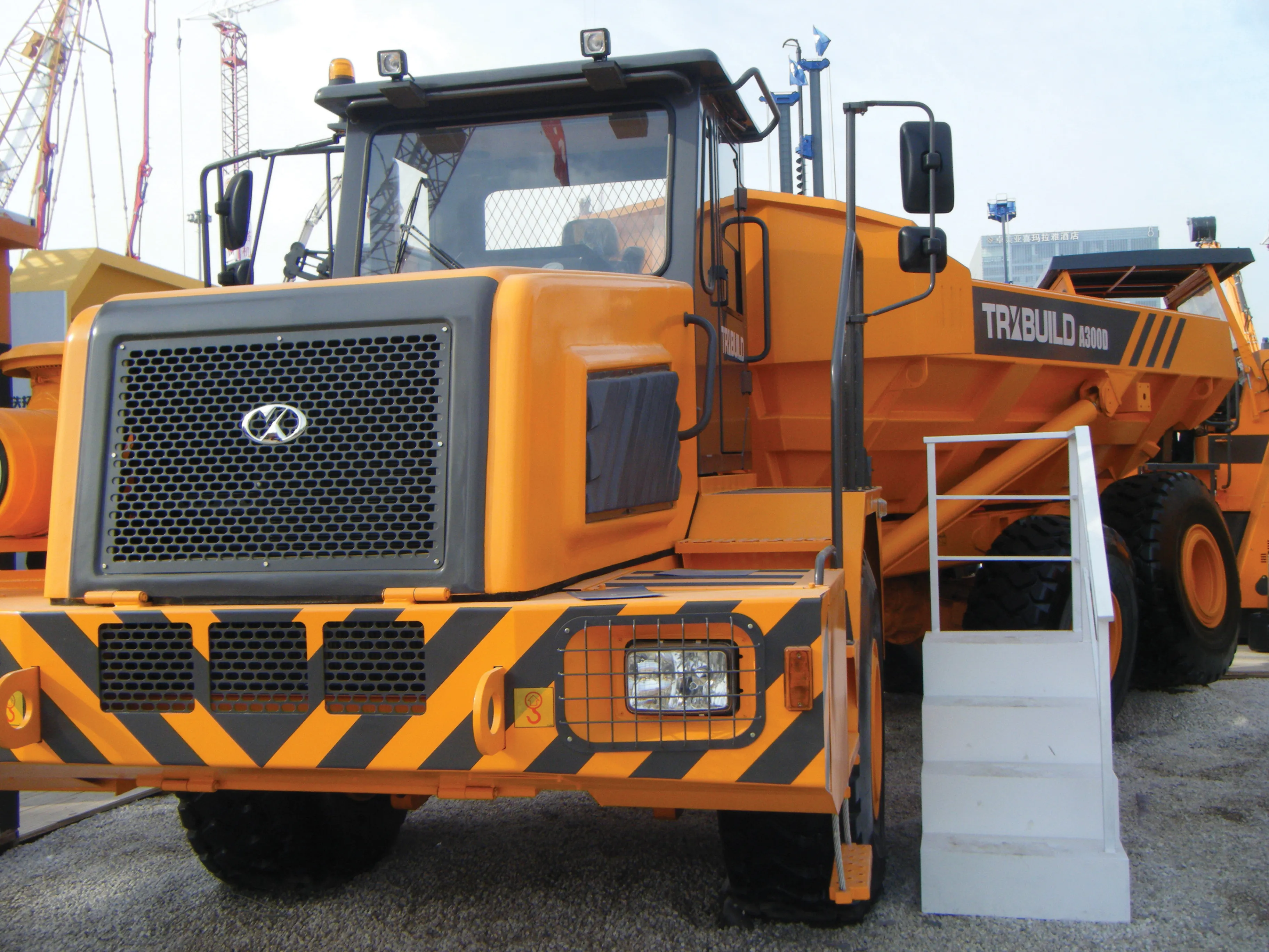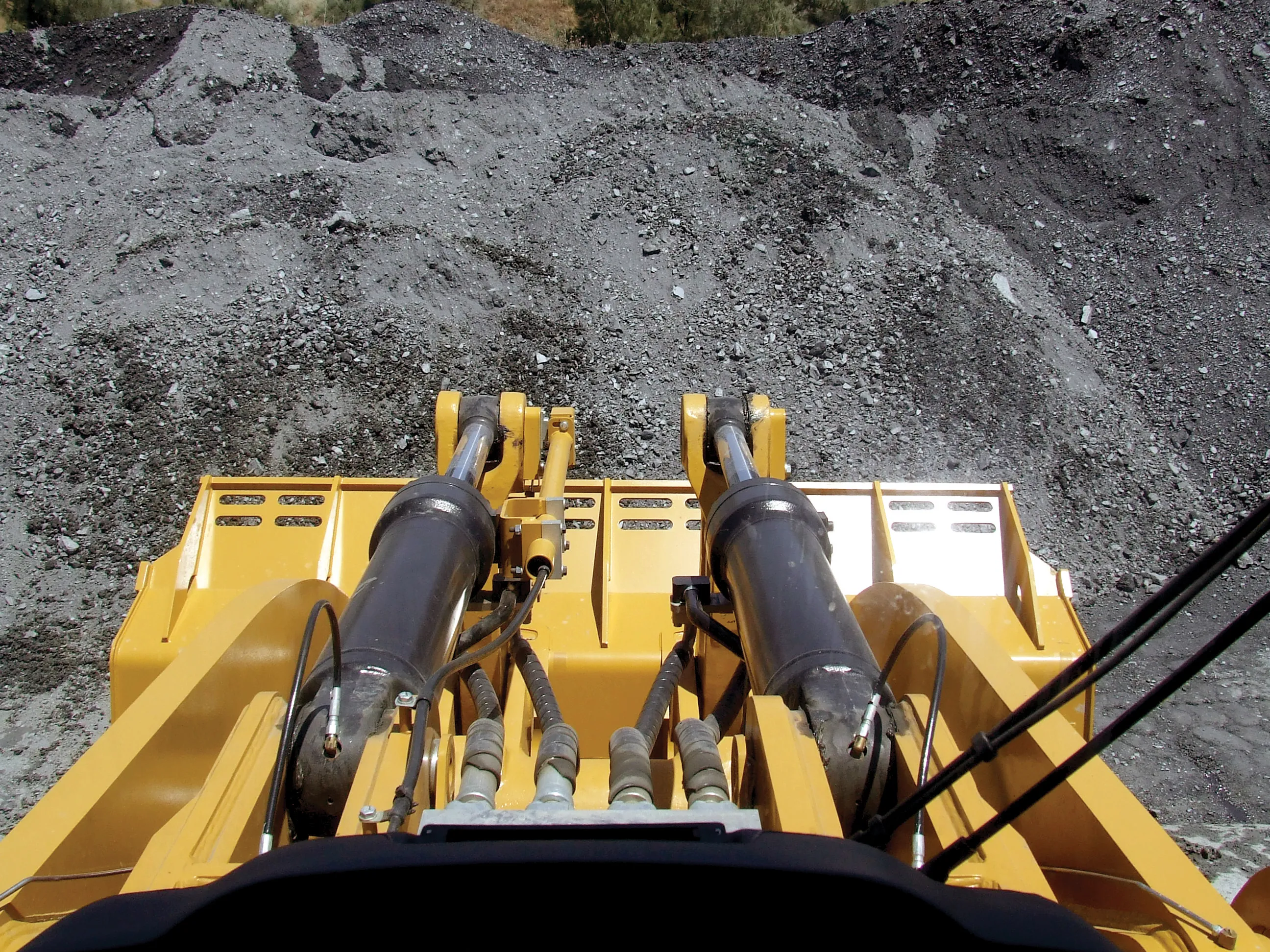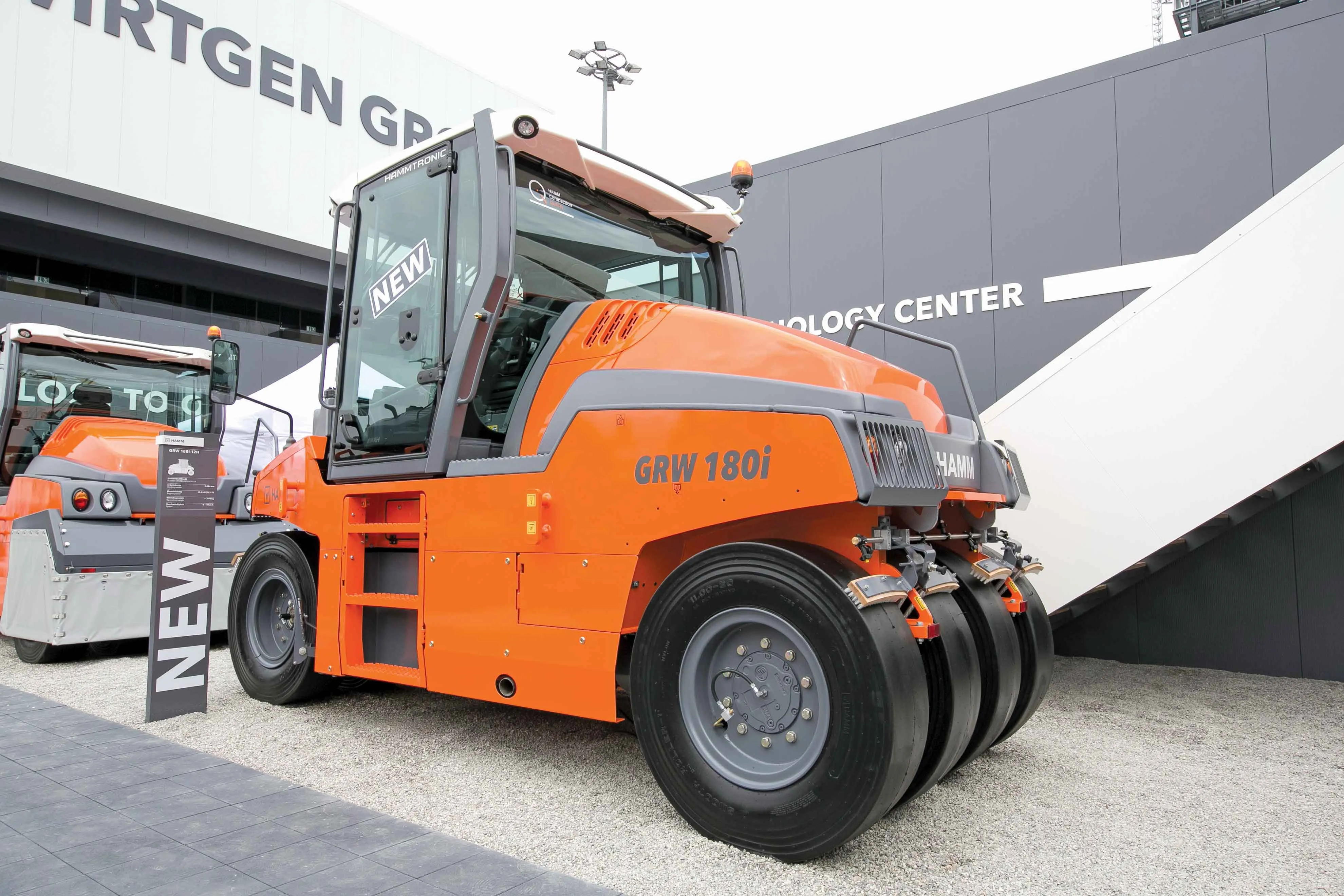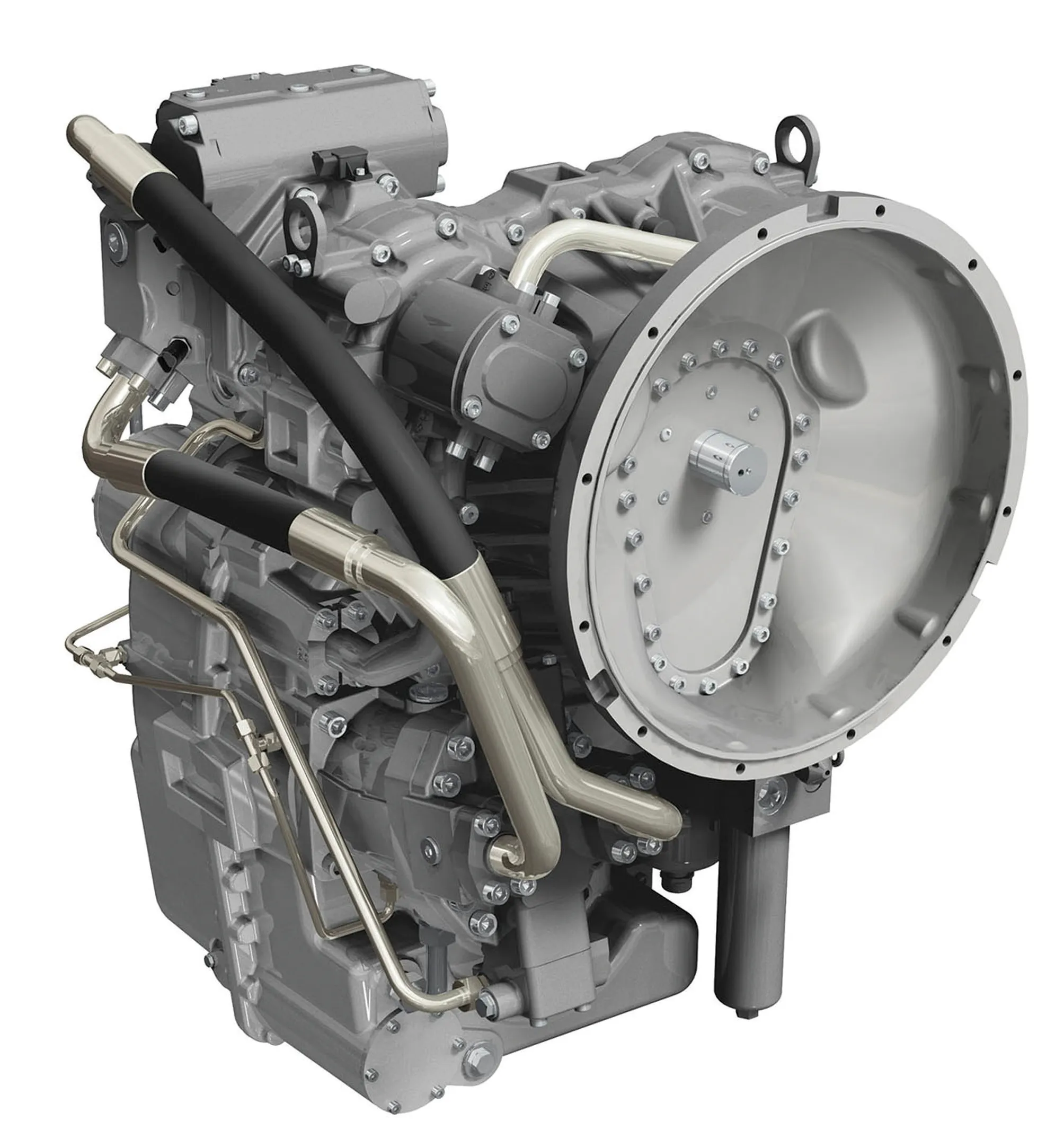All-wheel-drive trucks for the Chinese market - Mike Woof reports. One noticeable development at the bauma China exhibition in Shanghai in late 2012 was the proliferation of ADT models. Doosan and Volvo showed some of their latest ADT variants alongside their latest excavators and are keen to highlight the benefits of ADTs for use on sites where traction or grade may be an issue for rigid trucks or on/off highway haulers. However Caterpillar chose to highlight its off-highway rigid trucks at bauma China, as
February 19, 2013
Read time: 8 mins

All-wheel-drive trucks for the Chinese market - Mike Woof reports
The market for ADTs in China and Asia as a whole is still comparatively small, as on/off highway trucks or rigid chassis dump trucks are generally used on-site for haulage at present. This preference for rigid trucks for larger scale haulage in Chinese operations was apparent from the numbers of machines on show at bauma China. But that has not stopped some Asian manufacturers from considering that the ADT market has some potential and offering machines to meet anticipated future demand.
Of the Asian ADTs, the
The A300D also features well-matched components from leading suppliers with its Cummins diesel and ZF transmission; themselves updated versions of the parts used in the original Aveling Barford RXD machines. As a comparatively simple and lower cost alternative to the leading ADT models available, the A300D from TRX Build could conceivably build a market share in developing nations.
Moving up the payload scale, Chinese firm Qinhuangdao Tianye Tolian Heavy Industry (TTMAC) exhibited its latest TTA51 ADT at the Shanghai exhibition. This machine features a payload of 46tonnes in its 29m3 dumpbody and a GVW of 86tonnes when loaded. Power comes from a Cummins QSX15 diesel rated at 392kW and this drives through a six speed Allison transmission. The truck is aimed at an ADT payload class that is still developing worldwide. There have been a number of ADTs developed for this payload class over the years, the most successful of which is the
But it is still a niche market segment and it is worth noting that when Doosan took over the Norwegian
The TTA51 does bear a superficial similarity to the now deleted Moxy MT51, which was also powered by a Cummins QSX15 driving through an Allison transmission. It remains to be seen how demand will develop for this class of hauler and whether the TTA51 will attract sales in China or other developing countries. TTMAC does have a track record with ADTs however, having earlier developed its TTA25 and TTA45 models, with payloads of 25tonnes and 45tonnes respectively and the company also offers the TTM50, TTM70 and TTM100 rigid trucks in its line-up.
The most radical departure from conventional ADT design was unveiled by Chinese firm
The stand-out feature of the DAE60 however is its use of diesel-electric drive, with the engine coupled directly to an AC generator that in turn powers the six wheel motors and allows a top speed of 45km/h. In this respect the DAE60 is very different from the Doosan ADTs, which have a single differential at the rear axle that drives all four wheels through gears running in an oil bath and protected by heavy-duty, reinforced casings. In contrast, the XCMG truck’s four rear wheels are directly driven by the AC motors, so the DAE60’s rear swivel motor mounts are structural components that form part of the suspension. As these do not contain gears inside, they do not require such heavy reinforcement.
The truck’s other unusual feature is its claimed load capacity of 60tonnes in a long dumpbody with a notable overhang at the rear, while the gross vehicle weight is well in excess of 100tonnes.
Different drivelines have been tried in the ADT sector before and a hydrostatic transmission was tested extensively by
Other features of the DAE60 are more conventional. The XCMG ADT has a cooling pack to the rear of the cab, with a wide, but low, sloping engine cover at the front to ensure forward visibility and more cooling at the front of the engine. The highly individual style of the cab is said to allow plenty of space for the operator. High performance is claimed and the truck is said to have a large load capacity in its long dumpbody. The truck is also said to have a small turning circle allowing good manoeuvrability, automatic lubrication and ease of maintenance.
It is worth noting that the DAE60 is not the biggest ADT developed so far, as Volvo constructed a small number of A70s with 65tonne payloads and extended dumpbodies featuring three axles at the rear for Norwegian coal producer SNSK.
But the special Volvo machines were developed from the firm’s A40 ADT for a specific duty using a downhill haul route, so the comparatively low power to weight ratio was not an issue and this fleet was successful in the particular application. Other large ADTs available in the past, such as the DJB 550 and
Just how demand for this new truck concept from XCMG will develop remains to be seen. The machine is certainly innovative but only extensive use on-site will prove both its radical drivetrain and the cost/tonne production rate afforded by its much greater load capacity. The diesel-electric powertrain does offer performance benefits for retardation, which could save on brake wear and in large rigid truck applications, this type of driveline offers reliability, efficiency and ease of maintenance, factors that XCMG has clearly taken into account. But the truck’s gross vehicle weight means that tyre choice will be an issue.
The potential for larger ADTs has still to be fully developed. But these could meet needs in large earthmoving projects or for quarries with steep ramp hauls wanting greater productivity than can be achieved using 36tonne class ADTs, or even Bell’s 45tonne capacity B50. And there have been suggestions within the industry that other large ADT models may yet appear on the equipment market.









